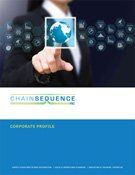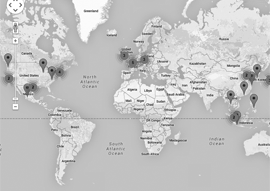
Typical Results
Many would say that in sports, in life, and in business, learning the rules, agreeing on the rules, and applying those rules most effectively are crucial advantages in achieving your objectives. This advice is particularly true as it relates to Supply Chain Planning. At ChainSequence, we teach your business the proven, best-practice rules of supply chain engineering science, as well as how to best leverage these principles when planning, re-aligning, or re-engineering your enterprise’s supply chain processes.
All supply chain planning processes comprise the same set of core components: Demand Management, Supply Management, Demand/Supply Alignment, and Order Management. First, our supply chain planning services are designed to give businesses a much better understanding of 1) how these interdependent elements can support each other and align together; and 2) what differentiates a best-in-class supply chain planning process from other, less systematic approaches. Next, we help your business develop and implement those governing rules that are considered best practices within each component. Finally, we integrate these practices across all four elements within the supply chain spectrum.
Before your teams can bring in software systems to provide decision support and speed up to a better process, ChainSequence helps your business build and provide potential software systems vendors a clear set of rules and direction to ensure that your corporate goals and financial objectives will be achieved. Once these rules are clearly defined, the ChainSequence team can also help your business consider the software systems and tools which offer the best ROI for your organization.
Ready to jumpstart your own S&OP program? Talk with us today to get on your way!
How ChainSequence Can help your organization:
- Demand Management
- Supply Management
- Demand / Supply Alignment
- Order Management
Understand all of the demands on your supply chainThe supply chain planning process starts with a solid understanding of all demands that will be placed against supply chain resources. A forecast will never be 100% accurate, but understanding the characteristics and attributes of the demands will help to apply quantitative models to determine future demands and provide the flexibility needed to react to natural market demand and supply resource volatility.
|
Visibility of all resources in your supply chainAn enterprise-wide view of mix-sensitive statements of both capacity and critical materials are necessary to ensuring the total statement of demand is reasonably constrained.
|
Rules based alignment of demand and supplyClearly defined planning cycles that utilize a formal set of business rules to drive the alignment of demand to supply based on your organization’s business objectives and financial goals.
|
Supply feasible, rules-based order schedulingUtilization of the prioritized supply response from demand/supply alignment provides for first-time, reliable commit dates. This supports business objectives and financial goals, while improving customer satisfaction.
|


